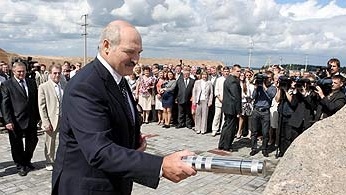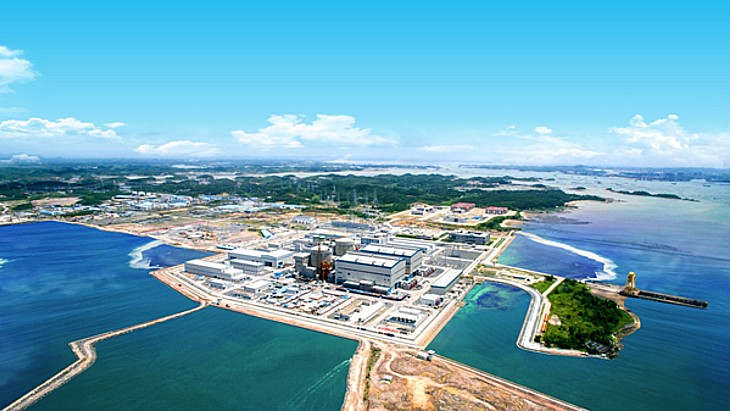The president of Belarus has helped bury a capsule at the site of the country's planned new nuclear power plant at Ostrovets, marking a significant occasion in that country's journey towards energy independence.
President Alexander Lukashenko placed the capsule, which had been crafted by local seventh grade students and two young workers from construction company Belenergostroya, inside a rock at the construction site. He then helped fix a plaque over the capusle with a message for future generations: "This marks the establishment of nuclear energy - a significant step in strengthening the energy security of the country, and a powerful incentive for accelerating scientific and technological progress and innovation."
The message added, "We are sure that we have taken the right decision in building a nuclear power plant, which embodies the best ideas and achievements of a scientific world, and which will ensure dynamic economic growth and improve the welfare of the people in the region." It was signed by President Lukashenko.
 |
| Lukashenko emplaces the capsule (Image: President's website) |
Belarus is dependent on Russian gas for much of its energy needs - a dependency the country aims to reduce. The reactors to be built at the Ostrovets plant will also be supplied by Russia: two VVER 1200 units provided by main contractor Atomstroyexport. However, the addition of 2400 MWe of nuclear generating capacity represents an important diversification of electricity supply for the currently non-nuclear country. Belarus' total generating capacity currently stands at only about 8000 MWe.
The general contract for the units was signed in July, following about three years of negotiation. A price tag of $10 billion has been associated with the deal, which will rely heavily upon the use of local contractors. Although groundwork has already commenced at the site, the pouring of concrete for the first unit is slated to take place by late 2013 and the unit should start generating electricity in 2018.
Researched and written
by World Nuclear News





_84504.jpg)
_58447.jpg)





